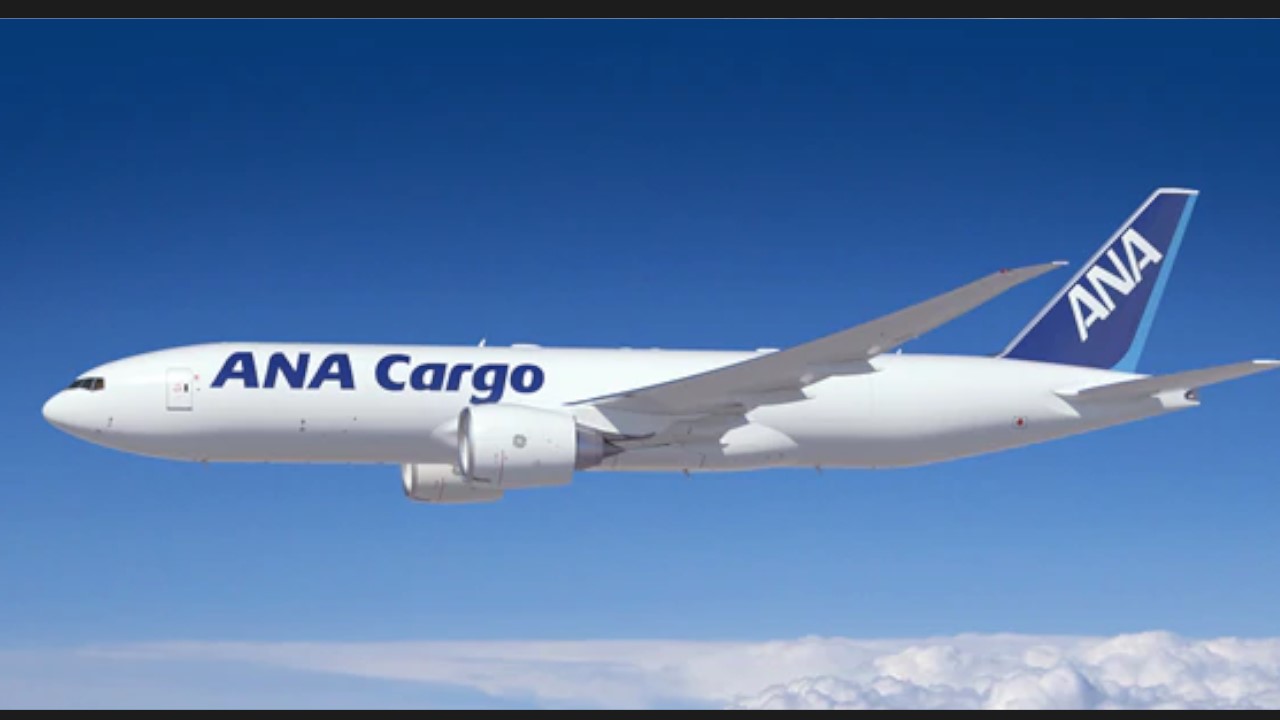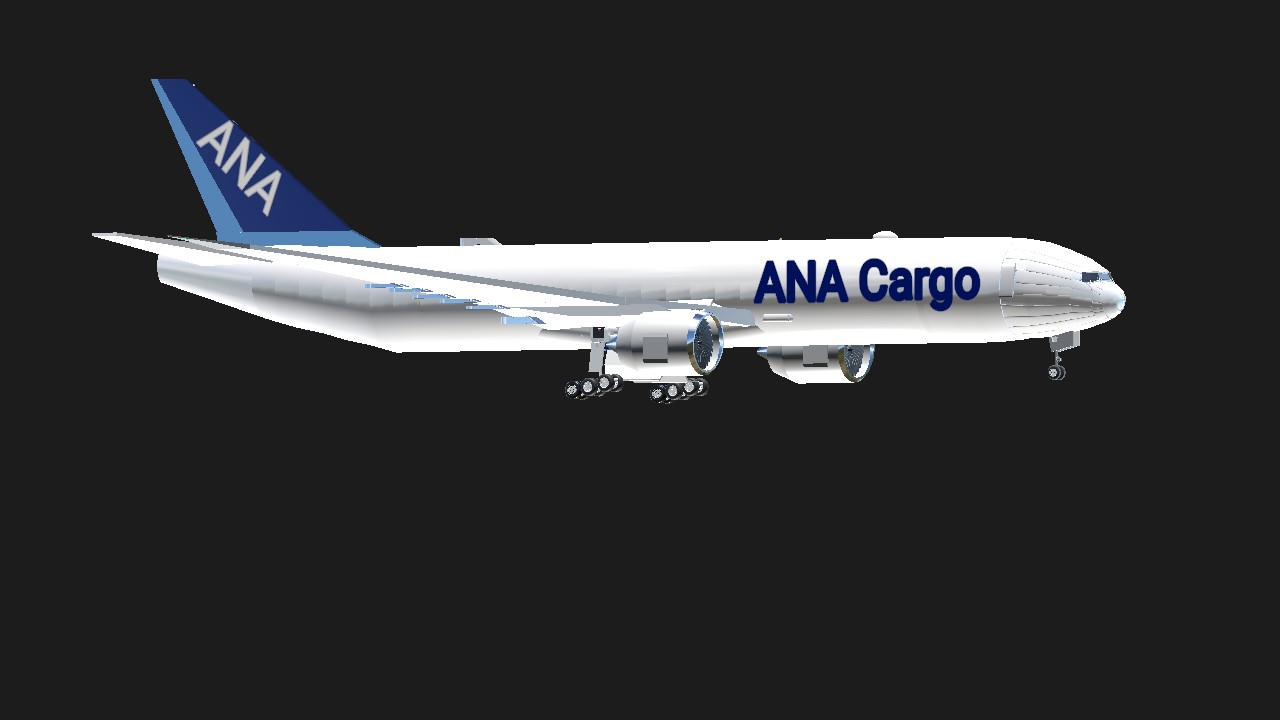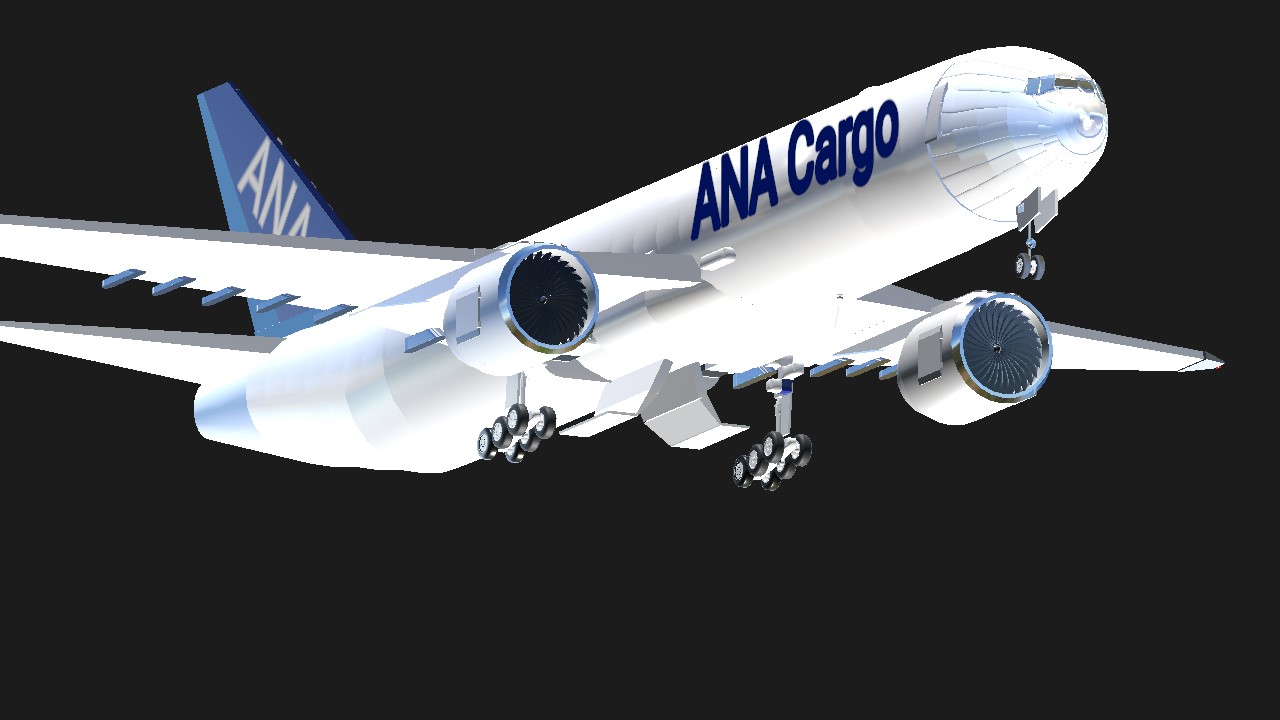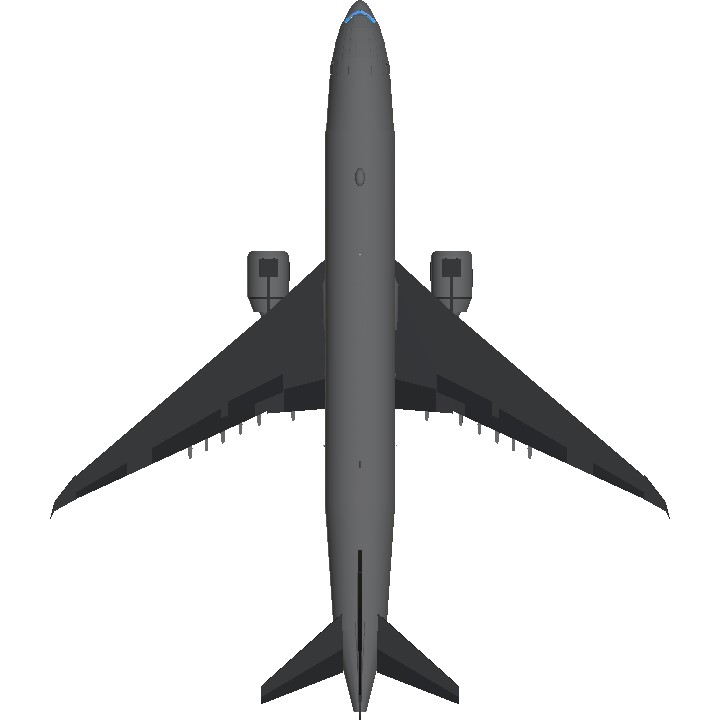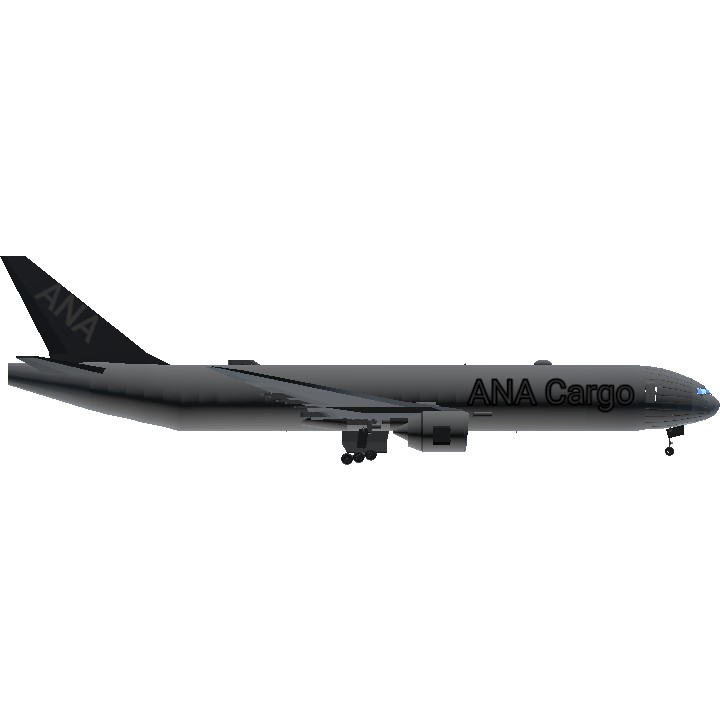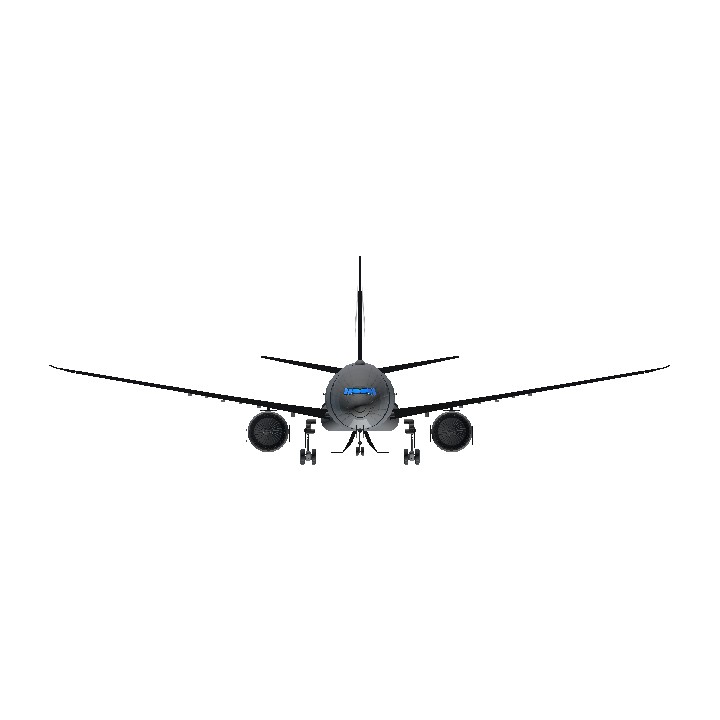In one way, the Boeing 777-300ERSF is a new aircraft that will soon be entering service as a freighter. In another way, much of this first aircraft example is anything but new, having an age of 16 and a half years. That's because the 777-300ERSF is a passenger-to-freighter conversion. With the first of its kind soon to enter service with Kalitta Air, let's take a look at what this jet has to offer.
"Over the course of these past two years, we have invested thousands of hours coupled with engineering and logistical efforts, in order to reach this moment in accordance with the original schedule." -Yossi Melamed, Executive VP of the Aviation Group at IAI
The result of a major partnership
It was actually back in October 2019, before the global health crisis, that Israel Aerospace Industries (IAI) and GECAS announced a partnership to "reshape the air cargo world of long-haul, large capacity freighters" with the launch of the 777-300ERSF, which they call "The Big Twin."
"IAI and GECAS are combining forces to form a unique solution for aircraft feedstock and conversion capability. And all supported by GECAS Engines’ leasing and GE Aviation for ongoing engine support solutions." -GECAS statement
The two firms promise that this new type will offer more volume at a lower cost, as well as great range and commonality.
Let's take a look at where the very first -300ERSF is coming from, as work has been ongoing in recent weeks.
A former Emirates passenger jet
The very first 777-300ERSF coming out of IAI's facilities already has more than 16 years of history to it. Indeed, the 777-300ER with MSN 32789 and Line Number 508 was first registered as A6-EBB and delivered to Emirates in 2005. A passenger aircraft, this jet was configured with the following layout:
Eight seats in first class
42 seats in business class
310 in economy
After almost 15 years of faithful service, the jet was officially withdrawn from passenger use in February of 2020.
GECAS would go on to repossess the leased aircraft from Emirates and re-register it as OE-IHW and then N557CC. Marked for conversion, work on the jet would take place at IAI facilities in Tel Aviv (see video above).
"The conversion process will take approximately 130 days, at the end of which the passenger aircraft will be turned into a freighter aircraft." -IAI
777-300ERSF specsWith 777-300ERs due to age-out of service and be replaced by the 777X in the coming years, IAI will give old passenger aircraft a new life in the cargo world. Photo: GE/IAI
Due in 2022
The aircraft, now registered as N557CC, will eventually enter service with major cargo operator Kalitta Air. This is expected to take place in 2022.
Before this particular aircraft's entry-into-service, however, it will work to achieve regulatory approval and certification from the Civil Aviation Authority of Israel (CAAI) and the Federal Aviation Administration. Given IAI's solid history of converting passenger aircraft to freighters (including the 747, 767, and 737), there shouldn't be a problem with its conversion of the 777. Should all go well, conversion work for future 777s will take place in Abu Dhabi, with Etihad taking part in the process.
According to its website, IAI says that the 777-300ERSF will deliver "twin-engine efficiency" by burning 21% less fuel per tonne than the 747-400 freighters. At the same time, it will have a "big-cargo" capability with 25% more volume than the 777-200F (Production Freighter) while retaining 90% commonality with the smaller twin.
As shown in the diagram above, the ERSF's spacious cargo hold will be able to handle multiple configurations of ULD containers, applicable to both commercial and military applications.
Do you think this product will be a big hit among cargo operators? Let us know by leaving a comment.
Related Topics
AVIATION NEWS
WORLDWIDE
CARGO
GECAS
BOEING 777-300ERSF
777-300ERSF
IAI
About The Author
Chris Loh
(2165 Articles Published)
Deputy Editor - An experienced photographer and video producer, Chris is a journalistic natural. Degree educated with a wealth of traveling history, Chris’ insight into routes, networks, and alliances brings a depth of quality to his work that is hard to beat. His strong relationships with Middle Eastern and Canadian airlines make him an asset to the team. Currently based in Vilnius, Lithuania.
More From Chris Loh
CONVERSATION
READ OR POST COMMENTS
Your voice matters. Discussions are moderated for civility.
Read Next
Boeing 747-8i
Why Most Aircraft Are Painted White
A photo of SOFIA's take-off
What Will Happen To NASA’s SOFIA Boeing 747 Now?
IndianAirlinesCaravelle_Groves
How An Uncontained Engine Failure Downed Indian Airlines Flight 171 In 1976
Aeroflot Ilyushin Il-96-300
34 Years Ago Today The Ilyushin Il-96 Made Its First Flight
5 Factors That Make Premium Economy Worth The Cost Of Upgrading
BY
BELLA RICHARDS
PUBLISHED SEP 25, 2022
Premium economy is more than just extra leg room.
Emirates A380 aircraft
The Emirates A380 operates the Dubai-Johannesburg Route Photo: Emirates
It has been three decades since Taiwan’s Eva Air introduced the first premium economy services in 1992, and the concept is still new to many travelers. While it can bear no comparison to business and first class, the cost can almost double a standard economy fare, but for what benefits? Extra legroom, more baggage, better amenities, and even airport lounge access may make the higher price tag worth it.
More cabin space
Many airlines with premium economy for long-haul routes offer different perks, but the most appealing upgrade they all include is extra room. The additional space is usually the biggest attraction for travelers considering the upgrade.
Most economy class seats have around 30-32 inches of legroom between the row in front, but premium offers up to 40 inches of separation. Each airline is slightly different, but Emirates is notably one of the best. According to the Dubai-based carrier, the premium service is offered on its flagship Airbus A380 aircraft.
In 2020, the airline revealed the first images of the cabin, and after a long soft launch that made it hard for passengers to book the service, customers can now purchase the upgrade on some of its longest routes.
The seat features eight inches of recline, 38 inches of pitch – to which Emirates says on its website it can go up to 40 inches – and the seat cushion measures at 19.5 inches wide. Simple Flying has a review of Emirates’ premium economy from London to Dubai.
Emirates Airline premium economy
Emirates made its premium economy service available for purchase in August. Photo: Emirates Airline
British Airways premium economy customers, dubbed ‘World Traveller Plus,’ are offered 38 inches of pitch and a slightly less seat width of 18.5 inches on its A350-1000 and A380-800 aircraft.
Most premium economy offerings include leg and footrests, adding to a spacious illusion and significantly enhancing comfort.
Luxurious dining
This isn’t guaranteed on all premium economy flights, but many airlines offer far better dining experiences, real cutlery, and crockery with meals than plastic or paper in economy.
While it doesn’t seem like much, having real cutlery does make the flying experience much more luxurious. British Airways, Virgin Atlantic, and Germany’s Lufthansa are vocal about their fine china dining.
My project-1 (4)
Virgin Atlantic offers restaurant style meals for premium economy passengers. Photo: Virgin Atlantic
Aside from sometimes receiving better meals and a wider variety of foods, some airlines also offer a beverage on arrival – resembling a hotel experience. On board Virgin’s Boeing 787, A350, and A330 aircraft, premium economy passengers are welcomed with a glass of champagne.
Australia’s flag carrier Qantas also offers complimentary sparkling wine, juice, or even a cocktail on its 787 Dreamliner or A380 premium economy aircraft. Lufthansa offers a non-alcoholic welcome drink and a bottle of water already placed on the customer’s seat.
More amenities
Most economy passengers can find a blanket, pillow, and earphones on their seats for long-haul flights. Some airlines, like Korean Air, may even offer slippers. But premium economy customers can expect a little bit more to make passengers feel refreshed after a long flight.
Japan Airlines, based in Tokyo, on top of basic amenities, offers premium economy passengers a toothbrush set, a moisture mask, earplugs, and an eye mask on all its routes between Japan and Europe, America, Canada, Australia, Southeast Asia, and Delhi. Slippers are also available on all routes, according to the carrier.
Cathay Pacific also provides an ‘environmentally friendly’ kit featuring socks, an eyeshade, earplugs, a toothbrush, and toothpaste on all long-haul routes.
Since 2016, Qantas has partnered with fashion brand Country Road for its aesthetically pleasing amenity kit. The kit includes an eye mask, socks, toothbrush, toothpaste, and even the noise-canceling headphones business passengers receive.
Qantas Amenity Kit
Qantas partnered with Country Road in 2016 to create a stylish amenity kit for Premium Economy customers. Photo: Country Road
Access to airport lounges
This privilege is not available for most premium economy customers, but in Japan, it is. Usually, special lounges are only accessible to business and first-class customers or if they are part of the airline’s loyalty program. But two airlines in Japan offer the luxury to their premium economy customers.
All Nippon Airways (ANA), also based in Tokyo, allows premium economy passengers on ANA-operated international flights access to lounges in Haneda Airport, Narita Airport, Kansai Airports, and Honolulu Airport. The lounges have varied services, such as comfortable chairs, a bar, and dining.
Japan Airlines also offers similar services. Passengers at Haneda Airport, Narita Airport, and Kansai Airport can access the lounges.
Stay informed: Sign up for our daily and weekly aviation news digests.
More baggage
Often travelers will pay a fee – sometimes extremely costly – for extra baggage allowance but don’t realize it may be worth just upgrading to premium economy to snag it for free.
However, this is another perk exclusive to a few airlines. Germany’s Lufthansa allows passengers to check in two items of baggage, each weighing up to 23 kilograms (51lb), twice as much as its economy fare. Plus, its loyalty HON Circle Members and Senators get a third bag weighing up to 23 kilograms.
British Airways’ World Traveller Plus customers can carry three bags that weigh up to 23 kilograms each. Passengers can bring a handbag guaranteed to stay in the cabin, a cabin bag that may need to go in the hold depending on remaining space, and the standard checked-in suitcase. Economy class only includes one cabin bag and one checked bag.
Cathay Pacific offers a similar incentive. For premium economy, customers can check two 23-kilogram suitcases plus cabin baggage.
While this might be an advantage for some airlines, others offer just as much baggage for a standard economy fare, so it’s always worth checking.
Related Topics
WORLDWIDE
PASSENGER EXPERIENCE
GUIDES
PREMIUM ECONOMY
PASSENGER
UPGRADE
About The Author
Bella Richards
(21 Articles Published)
Journalist - Bella joins the Simple Flying team with experience writing for Australian Aviation, Space Connect, AEROSPACE Magazine, and Orbital Today. Based in the United Kingdom
More From Bella Richards
Read Next
Singapore Airlines Airbus A350-941
Which Aircraft Have The Longest Range?
_DSC1296
FlyArystan Celebrates The Delivery Of Its 1st Brand New Airbus A320neo
AAdvantage---Spend-1
How To Spend American Airlines AAdvantage Miles
Turkish Airlines Boeing 777
Why Turkish Airlines Removed Its Premium Economy Cabin
Write For Us
Home
Contact Us
Terms
Privacy
Copyright
About Us
Fact Checking Policy
Corrections Policy
Ethics Policy
Ownership Policy
App Download
Ad Free Subscription
Podcast
Copyright © 2022 simpleflying.com
Specifications
General Characteristics
- Predecessor 777 300ERSF remake of the big twin
- Created On Android
- Wingspan 216.4ft (66.0m)
- Length 251.4ft (76.6m)
- Height 73.2ft (22.3m)
- Empty Weight 119,061lbs (54,005kg)
- Loaded Weight 324,889lbs (147,367kg)
Performance
- Power/Weight Ratio 1.66
- Wing Loading 43.6lbs/ft2 (212.8kg/m2)
- Wing Area 7,452.6ft2 (692.4m2)
- Drag Points 82214
Parts
- Number of Parts 425
- Control Surfaces 11
- Performance Cost 2,068

